Student Blog
What are OS/OT?

USC Student Run Clinic Experience! ⟩
January 28, 2015, by Claire
Community Getting Involved What are OS/OT?
Hello! I hope 2015 is off to a good start for all of you!
Today I want to share with you about my experience with the USC Student Run Clinic. The Student Run Clinic is a really unique organization that I would recommend students to get involved in! As an interdisciplinary care team, students from USC’s schools of medicine, pharmacy, occupational therapy, and physician assistant work together to provide comprehensive health care to the underserved in Los Angeles.
This past weekend was the first time that I volunteered with SRC. I loved meeting other students and learning about how each of our professions contribute to the patient’s care. It was a busy clinic weekend, so I was able to work with four patients. It was very interesting meeting a variety of patients of different ages and backgrounds! One challenge that I faced was the Spanish speaking language barrier; I learned that language is a crucial part of the communication with the patient. Because I am not the most fluent Spanish speaker (whoohoo high school Spanish), I felt like there were many things that I wanted to offer her as an occupational therapy student, but couldn’t convey it properly to her.
On the other hand, it was extremely meaningful to see how the role of the occupational therapist is so client centered and that we are able to meet the patient as an individual person. When working with the patient diagnosed with depression, the other members of the team did a really great job at gathering her medical history. In the team huddles, I was able to bring a holistic perspective to her life and tie in the medical considerations to her participation in activities. However, I had the opportunity to get to know her and provide a safe space for her to really share what she was struggling with in her life. I was struck by how important it is to build trust with the patient and I felt honored that let me hear the full story about her experience.
Together, we explored all the things that troubled her, including the environment in her neighborhood, her relationships with family members, and challenges in her daily routine. As occupational therapists, we are also concerned about the emotional, psychological, and spiritual health of our patients. It turned out that spirituality was something that mattered a lot to this patient. With my facilitation and encouragement, she personally set a goal to engage in more spiritual reading to help calm her thoughts throughout the day. She left our session feeling empowered and motivated.
It was such a meaningful experience!
⋯
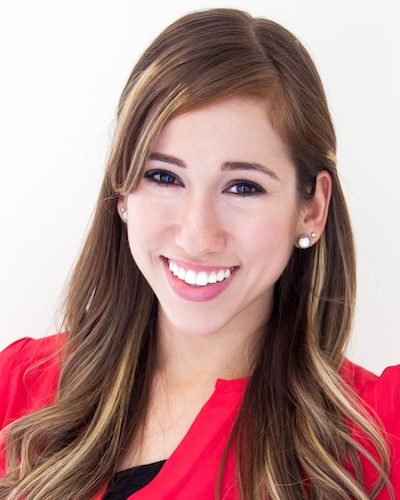
Spring Semester ⟩
January 12, 2015, by Leila
Classes What are OS/OT?
Today is the first day back to school after a much needed 4 week break! With a new year in place, my mind and body is refreshed and ready to conquer the last semester. This semester is different from the rest because we are able to choose electives! Part of our curriculum is that we are required to take 12 units of electives, but we aren’t able to do so until our last spring semester. Many of us look forward to this semester because we have the opportunity to select specialty practice/topic courses of our choice! Whether it’s building your motivational interviewing skills, gaining a better understanding of dysphagia through the lifespan, or delving deeper into Sensory Integration Theory, there are many classes to choose from. During this semester, you also have the opportunity to take other electives to gain more clinical experience, participate in a research project or take a class outside the OT division. It’s really a great opportunity for us as occupational therapy students to gain more knowledge and expertise on areas of our interest.
This semester also includes a Leadership Capstone class, where we learn how to be leaders in our profession! Like I mentioned in my last blog, this class includes a 2 week leadership externship where we go to different sites to learn and showcase our leadership skills. This is a personalized experience for each student and the opportunities out there are vast! Over the break, I finalized my decision to go to Costa Rica and will be joining 6 other students! A group of seven of us will be split into two groups where we will be placed in two projects: either volunteering at an orphanage or with a street children project. We will be leaving March 1st, which is fast approaching! I’m extremely excited about this opportunity and look forward to the experience. As you can see, the spring semester is quite the change from our previous semesters. Both exciting and challenging!
During my winter break I didn’t do much but enjoy the time off to relax and engage in my favorite occupations. 😊
⋯

Finding the Occupation in Occupational Therapy! ⟩
December 8, 2014, by Claire
Classes Fieldwork What are OS/OT?
What makes an occupational therapist a good occupational therapist?
The past few weeks, I have been so inspired by all the different kinds of activities that an occupational therapist can do to help individuals improve their participation in daily life activities!
One of my favorite highlights of this semester was working with a patient at my Level I Fieldwork site. He was referred to occupational therapy after a motor-vehicle accident that broke his right arm and and left leg. When we first met him, we interviewed him using the Canadian Occupational Performance Measure and found out that he wants to get back to his hairdressing job! We also learned about his interest in cooking. During our treatment sessions, we would review some exercises in preparation for an occupation-based activity, which included making mashed potatoes (I learned his recipe — absolutely delicious. It’s all about adding a lot of butter) and braiding hair! As a Level I fieldwork student, our role includes observing the occupational therapists and also possibly participating in some of the treatment process. In this case, it meant that I volunteered my hair to be braided during the treatment session, and I also ended up receiving a free head massage! Besides all the laughter, our patient was able to practice standing for longer periods of time without crutches (important for one hair-cut session!) and using his muscles in ways that he would for doing someone’s hair. We learned a lot about both occupation-as-ends and occupation-as-means, and I felt like this treatment session really showed that. Our patient was participating in a purposeful activity which he was motivated about, but the occupational therapist was also analyzing his movement and problem-solving with the patient regarding challenges that he was facing while doing the activity. That’s super cool! I look forward to his recovery so that he can keep changing people’s lives — one hairstyle at a time.
Here’s a couple pictures of me with my new hair after the treatment session:

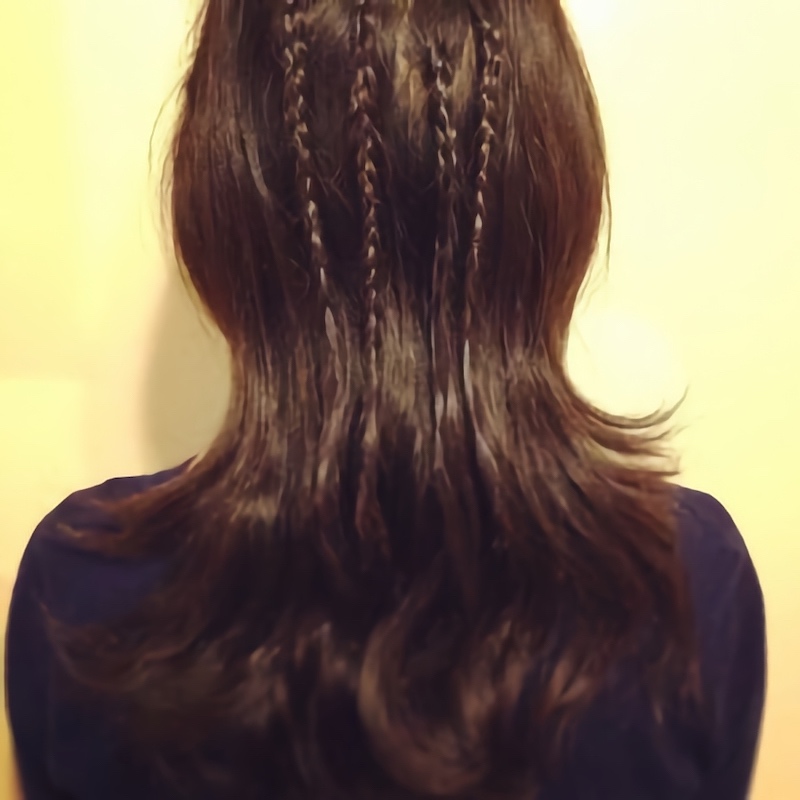
In class, we have been learning about developing treatment plans that help improve the daily functioning of our clients. We also looked at different kinds of adaptations that may be used in the kitchen. Here are some things that we did — a pie in time for Thanksgiving and a big brunch potluck in our occupations lab.

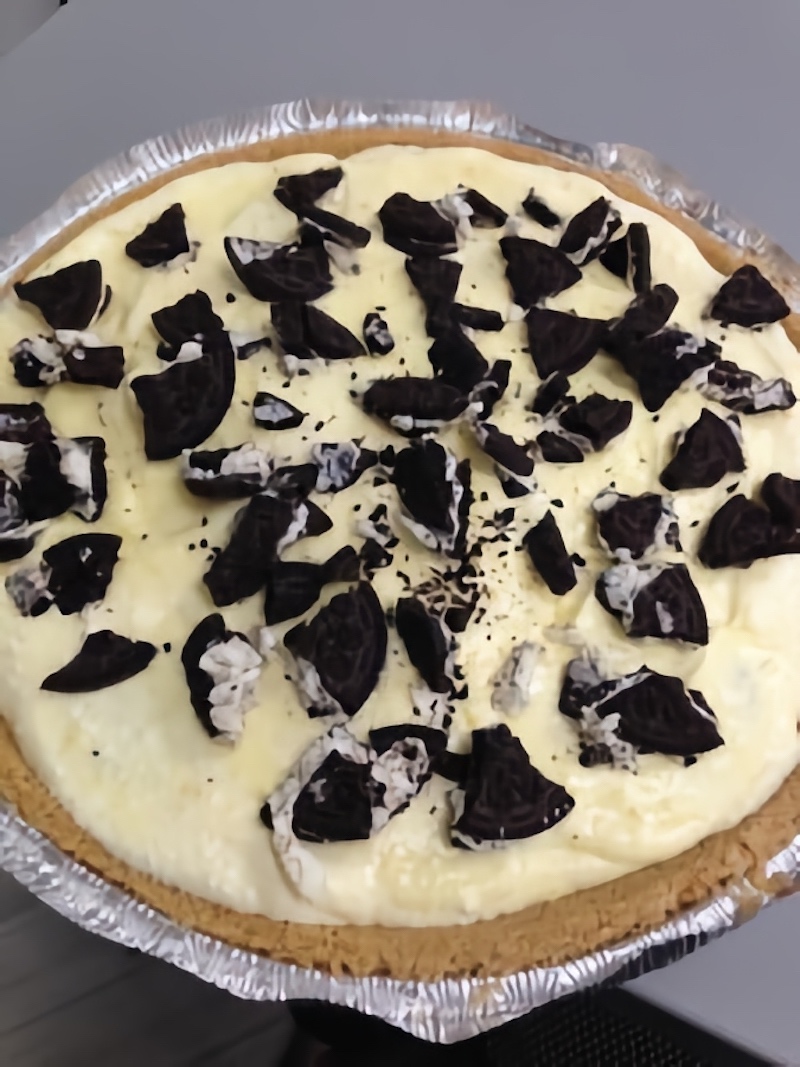
We are moving into our finals week — best of luck to all students, and I will update again soon!
⋯
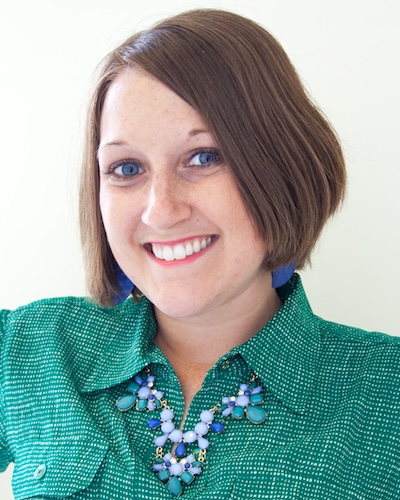
Fieldwork ⟩
November 30, 2014, by Kristy
Fieldwork What are OS/OT?
Last week we finished up our Level I Fieldwork opportunities so I thought I would take some time and give you a little bit more background about what these experiences look like. 😊 One of the unique things about the program here at USC is that fieldwork experience is built into our coursework within the Immersions. As students, we are placed in 3 different Level I Fieldworks, which align with which immersion you are in — Adult Rehabilitation, Mental Health, or Pediatrics. The first two fieldwork opportunities occur in our first year of the program. I started in the Mental Health immersion, so my first Level I was at a Community-Based Mental Health Wellness Center. This was a very interesting experience as it was my second semester of graduate school (can’t forget about summer term!) and there was no occupational therapist at my setting. I was very nervous about not having someone to shadow but part of the experience is just learning about the population you are working with. I was fortunate enough to chat with individuals and hear their life stories as well as lead groups and meet with individuals one-on-one to facilitate lifestyle changes. Overall, I thoroughly enjoyed this opportunity and thought it was a great learning experience! The next semester I was in the Pediatric Immersion and was placed at a local school district. This was fantastic for me since I hope to go into School-Based Practice. I loved being able to work with the children and plan creative activities for them to do. I learned a lot about working with multiple children at one time, planning therapeutic obstacles, and creating educational games. Being in a school district is also a great opportunity to learn about interdisciplinary teams as you work with classroom teachers, physical therapists, speech therapists, psychologists, among others. Lucky for me, this experience confirmed by desire to work in this area of occupational therapy! My last Level I experience was for the Adult Rehabilitation immersion, and was at an outpatient therapy clinic, specifically working with hands. I learned a lot of what it takes to “prep” muscles for therapy, such as why you would use heat or ice. In addition, I learned about different types of exercises and stretches you can do for the joints and muscles of the fingers, hand, wrist, forearm, and elbow. Overall, this was a great opportunity for me to learn about an area of occupational therapy that I didn’t know anything about.
In addition to Level I Fieldwork opportunities, we also are placed at two Level II Fieldwork sites. The first one occurs between your first and second year in the program, after you have completed two Level I experiences. My first Level II was at a Community-Based Mental Health Wellness Center (yes — same type of setting as my Level I if you’re still with me!). I pursued this opportunity as it was a setting I very much enjoyed and thought I had a lot more to learn about! And boy was I right! The Level II experience is for 12 weeks full-time. I was able to lead groups, meet one-on-one with clients, facilitate a workshop on time management, and conduct a relaxation workshop. I was given the chance to create my own experience and sought out many educational opportunities! One included the beginning development of a group intervention for adults with attention deficit hyperactivity disorder (ADHD), but stay tuned for more on this later! I have yet to complete my second Level II fieldwork, but am excited for what experiences that will bring.
Fieldwork experiences are great chances to learn more about the field of occupational therapy and explore different settings that you may not have done before. USC is unique in that we have 5 opportunities throughout our program and they are all different experiences! Everyone’s is a little bit different, but they are all great!!!
⋯
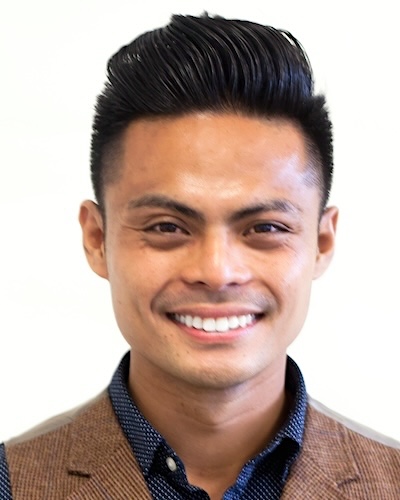
Pedal Pushers! Pedal to the Medal, Giving Back Shifted to Another Gear! ⟩
November 14, 2014, by Jonathan
Community Getting Involved What are OS/OT?
Hello there everyone! Hope that you’re all doing great!
This past Sunday, some of my fellow classmates and I had the opportunity to help out Pedal Pushers, a Los Angeles chapter of Ambucs Inc., a non-profit organization that helps to provide adaptive tricycles for children and adults through fundraising within the community! The opportunity to get involved with this awesome cause was wheely fun and wheely rewarding 😛 This amazing organization was brought to my attention by Sonserey, a member of Pedal Pushers, who I had the pleasure of meeting at OTAC. I SPOKE (hehe) with Sonserey and she told me all about Pedal Pushers and Ambucs, in addition to the story of what fuels their efforts. Sonserey is an occupational therapist who works in pediatrics. She told me that when she’s doing an evaluation, much alike most OTs, we start off by trying to decipher what the client’s meaningful occupations are. A common response from the kids she works with is to “ride a bike.” However, for some children with special needs, a traditional bicycle may not be the most practical option. Thus, Amtryke therapeutic tricycles were created to offer an adaptable, universally designed option for children with varying levels of physical abilities! The Amtrykes can be custom made to have a number of features, based on the child’s abilities, safety, and family preference. These features include hand or foot operation, rear-assist steering, assistive pedals, in addition to other adaptations. The best part is, everything on the Amtryke can be adjusted, so the child can continue to use their Amtryke as they get bigger and grow older!
What my classmates and I had the opportunity to participate in on Sunday was actually the final phase of the Amtryke process. It all starts off first with raising enough funds to be able to purchase the Amtryke for the child. Committed families, friends, and communities focus their efforts in hopes that they can make the child’s dream come to fruition. Second, the child is then assessed and fitted for their very own Amtryke. Therapists will collaborate with the children and their families in designing a unique Amtryke that best fits the child’s abilities, function, and interests. The final stage in the process was what my classmates and I had the pleasure of participating in on Sunday! There’s a build an amtryke work shop in which therapists and volunteers will actually create the Amtrykes for the children. The children and their families then pick up the Amtrykes, give it a test drive, and then get to take their Amtryke home! The whole process requires a great deal of diligence on the child’s part, as they patiently wait for an Amtryke they can call their own.
The whole building process we engaged in on Sunday was fun, informative, and extremely rewarding. When the children and their families arrived, you could see the excitement on the children’s faces. To see how ecstatic they were when they first hopped on their Amtryke and propelled a couple feet forward was absolutely priceless! The genuine elation that consumed the kids was contagious, and you couldn’t help but feel the same happiness. Thank you so much to Pedal Pushers and Ambucs for letting us be part of this amazing cause! Here’s some pictures of the process, enjoy!


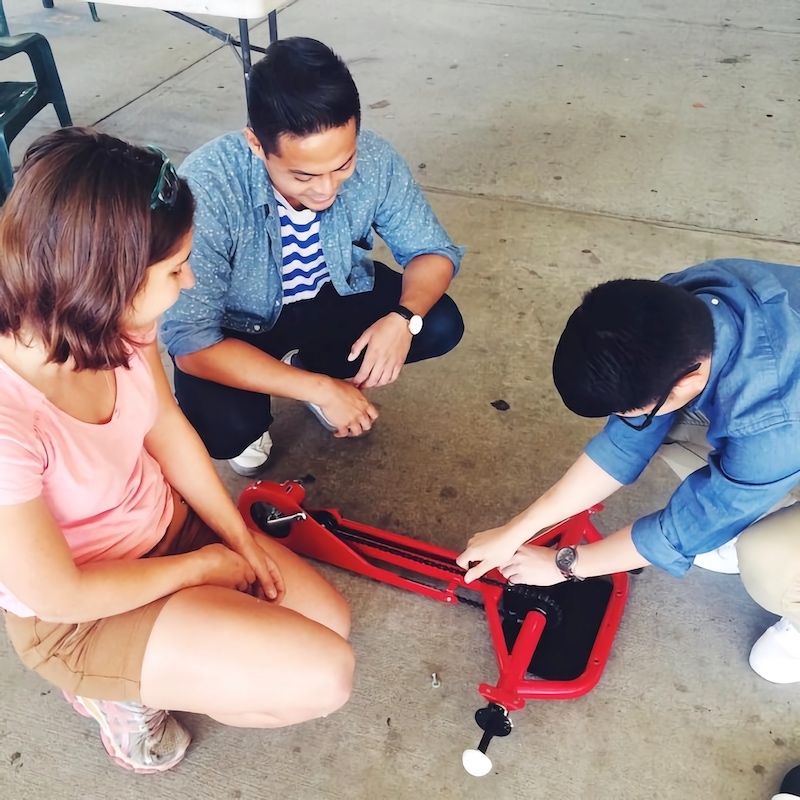
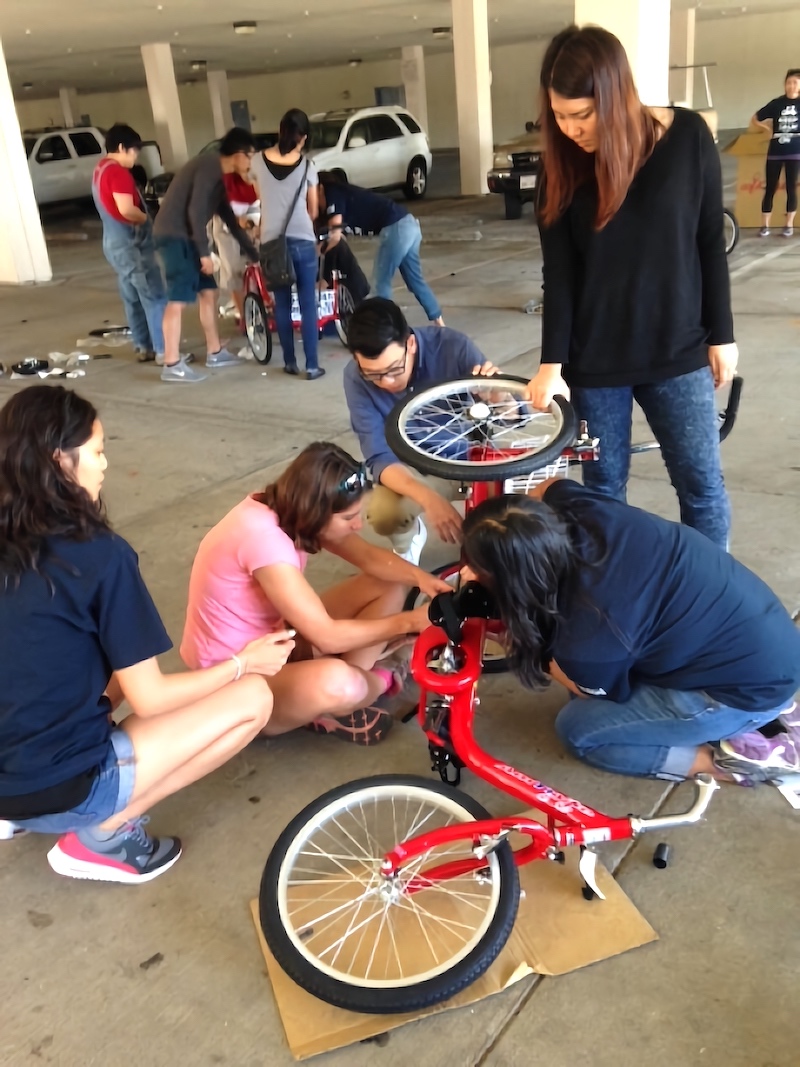



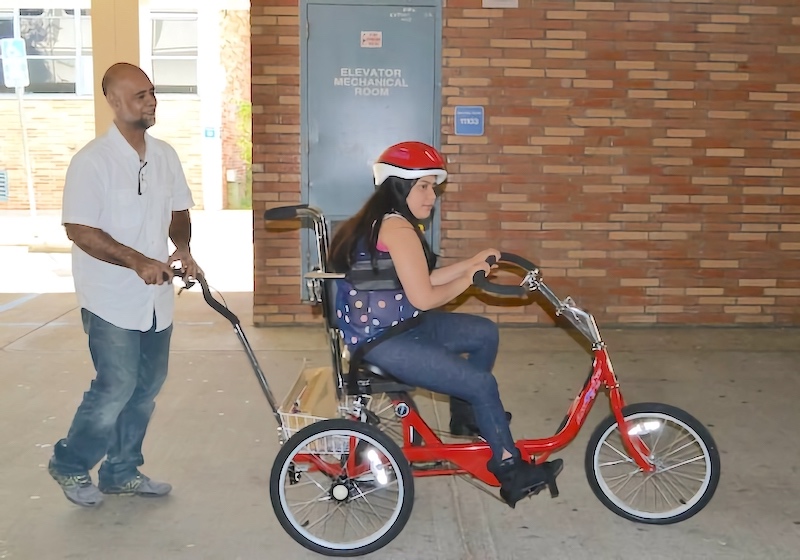
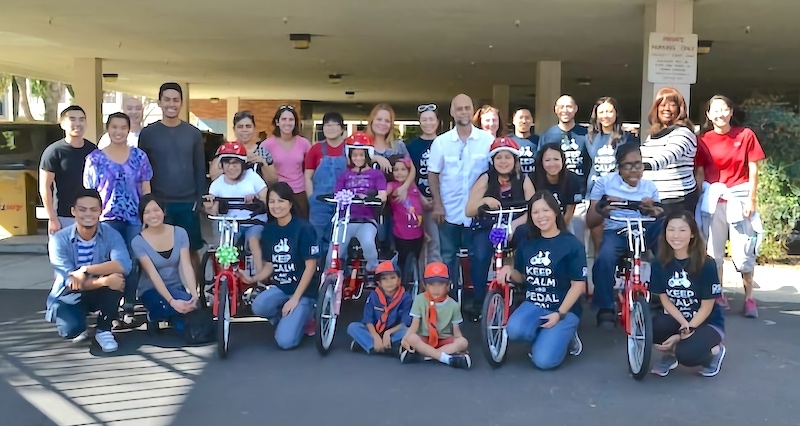
If you’d like to learn more and get involved with Pedal Pushers/Ambucs, please feel free to visit them at pedalpushers2014.wix.com/pedalpushers and ambucs.org.
Also feel free to like Pedal Pushers page on facebook at facebook.com/PedalPushersLA
Thank you for reading! Have a great weekend, follow your passion, pedal on, but remember to not lose your balance 😊
— Jonathan
⋯





